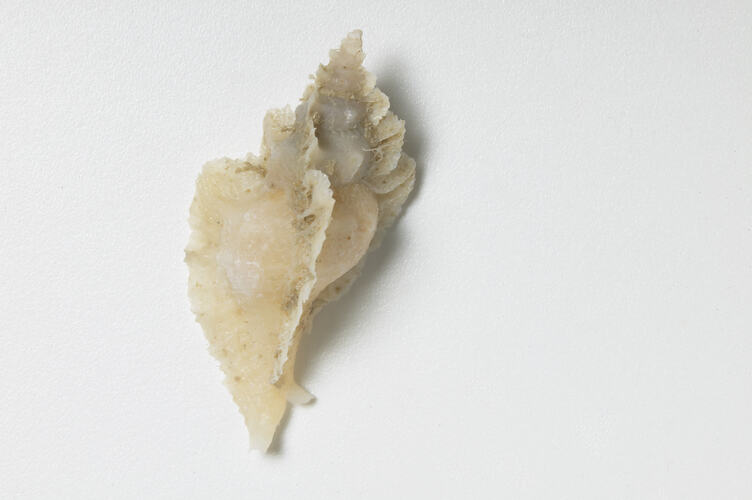General Description
Shell pale white-cream to brown. Shell with three tall thin ridges, one forming an extended lip around the aperture. Ridges unbranched and lacking horns. Rounded lumps (knuckles) between the ridges. Aperture shape complex; an oval shape with a narrow channel extending to the front of the shell (forming a "p" shape) and another, shallower, running sideways from the shoulder into the external sculpture. Shell up to 6 cm long.
Biology
These snails are one of several murex species in southern Australia. They differ by having various forms of ridges including spiked, curled and branched. Like most snails in this family, they are predators, feeding on gastropods, bivalves and barnacles by drilling holes through the shells of their prey. Fresh shells have ornate sculpture but they are often badly damaged by the time they wash up onto beaches.
Distribution
Southern mainland Australia and Tasmania.
Habitat
Rock pools and subtidal areas of sheltered and exposed coast.
More Information
-
Animal Type
-
Animal SubType
-
Brief Id
Three tall thin ridges, lumps between ridges.
-
Colours
White, Grey
-
Habitats
-
Diet
Carnivore
-
Diet Categories
Bivalves, Sea snails, Invertebrates
-
Endemicity
-
Commercial
No
-
Conservation Statuses
CITES: Not listed, FFG Threatened List: Not listed, DSE Advisory List: Not listed, IUCN Red List: Not listed
-
Depths
Shore (0-1 m), Shallow (1-30 m)
-
Water Column Locations
On or near seafloor
-
Taxon Name
-
Scientific Author
(Reeve, 1845)
-
Common Name
Three-shaped Murex
-
Phylum
-
Subphylum
-
Superclass
-
Class
-
Subclass
-
Superorder
-
Order
-
Suborder
-
Infraorder
-
Superfamily
-
Family
-
Subfamily
-
Genus
-
Species Name
triformis

